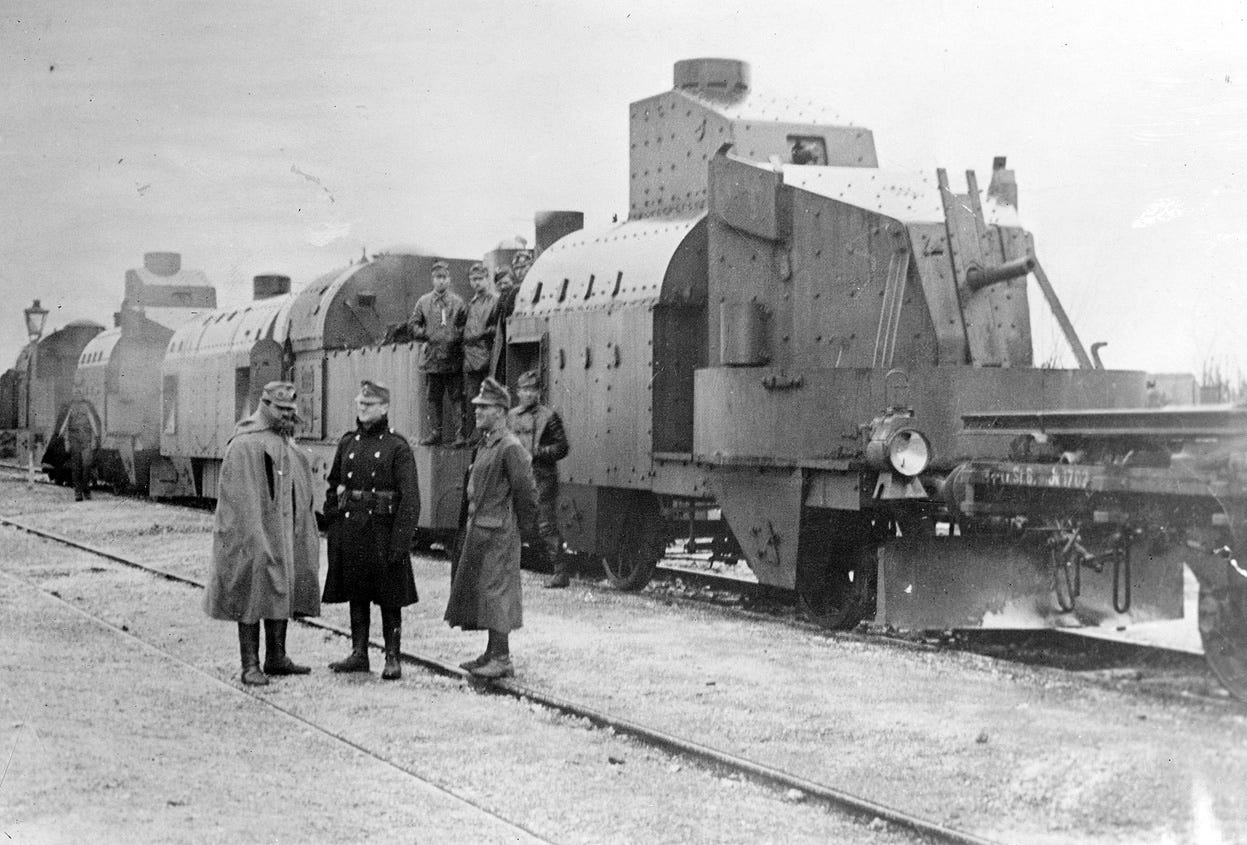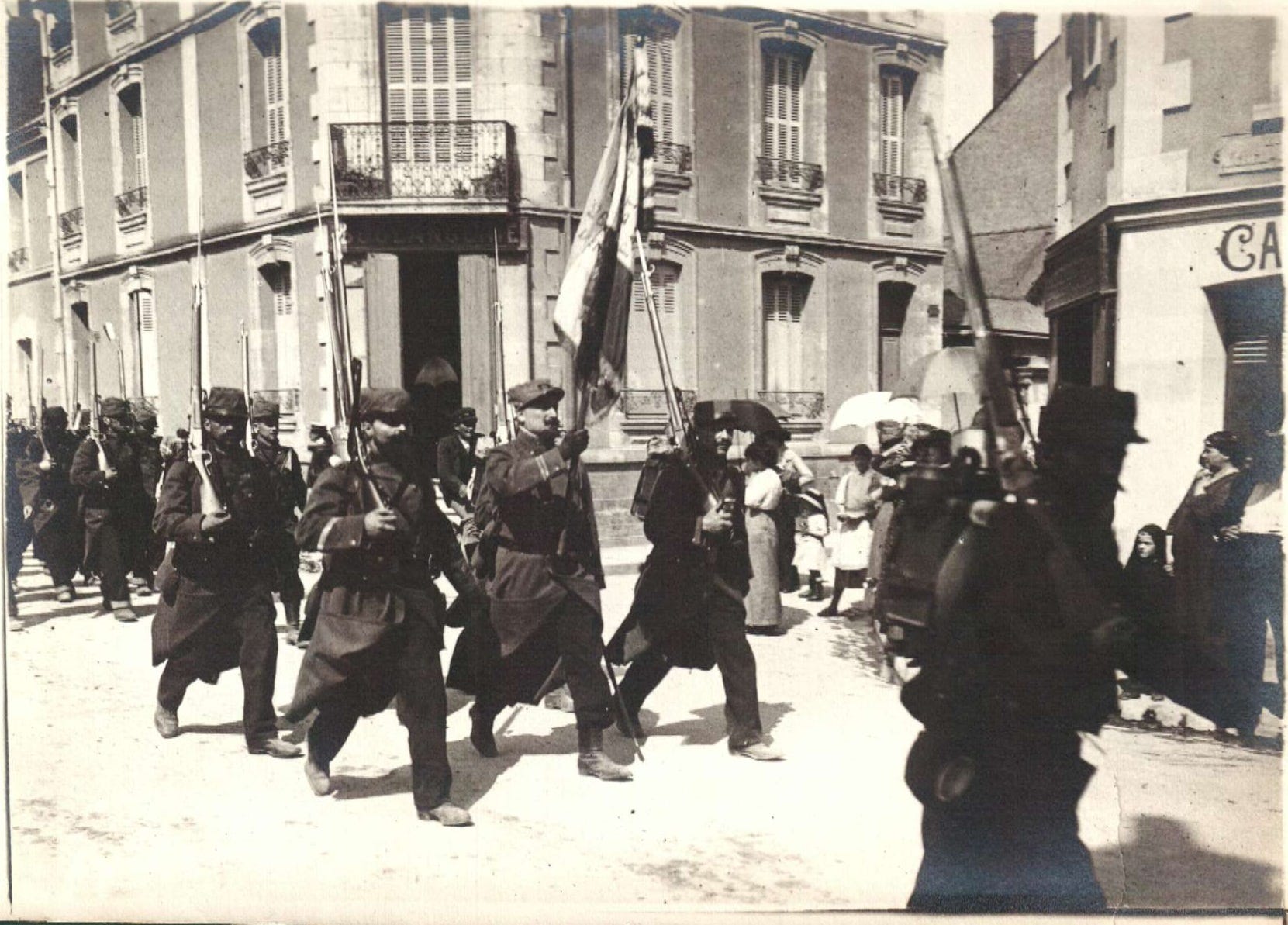by JAMES SIMPSON
World War I couldn’t have happened without Europe’s railroads. Trains were the key to operational success and were the only way to supply the unimaginably large armies spread out from Belgium to Switzerland.
As Germany hardened its plans for war, the general staff sent out orders along the chain of command for the initial phase of its invasion of Luxembourg — take the railroads.
At the eleventh hour, Kaiser Wilhelm II postponed the war, but the message didn’t reach one squad of German soldiers who drove into the sleepy town of Troisvierges on the evening of Aug. 1. Germany had invaded Luxembourg 12 hours early.
The troops took up position in the town’s train station. Troisvierges sat on a strategic branch line headed toward Belgium. Germany’s leaders knew that to outflank French forces along the German border, they would have to control the neutral nations of Luxembourg and Belgium.
A German officer stormed into the Troisvierges telegraph office and demanded control of the communications equipment from the station master. Even with an M1879 revolver pointed to his head, the station master smashed the telegraph on the floor.
The officer didn’t shoot him — and a messenger recalled the troops back to Germany an hour later. But it’s indicative of just how important trains were during World War I. People were willing to die to prevent or delay their capture.
In short, trains were the best method of mobilizing and supplying troops in 1914. Europe’s railway networks would also characterize the geography of the war.
In the 19th century, Prussia and Britain realized the effectiveness of the railroads for conveying troops into battle. As Germany unified, it inherited Prussia’s experience in military organization, and set out on the most ambitious war of movement ever conceived to that point.
Under successive chiefs of the German general staff — Helmuth von Moltke the Elder, Alfred von Schlieffen and Helmuth von Moltke the Younger — the German military war-gamed plans for the invasion of its neighbors.
After the 1892 Franco-Russian Entente, these strategies included how to conduct a two-front war. “Build no more fortresses, build railways,” the elder von Moltke once said. Germany listened. Its railroads were world class.
The same couldn’t be said for Russia. With its continent-spanning landmass and poorly-developed rail infrastructure, the Tsar couldn’t deploy his forces to the German borders as fast as the Kaiser could. France, however, manned the border in force and had a strategic railway in constant readiness.
Paris was fully aware of the advantage of pinning the Germans down on two fronts. To remedy the awful state of the Russian railroads, the French government subsidized the Tsar’s efforts to improve rail infrastructure along the eastern German border.
The possibility of being squeezed between the two Entente powers drove German planners toward fighting a quick, decisive war in the west. They hoped to subdue the French threat before Russian forces could effectively mobilize in the east.
Berlin constructed “cannon railways” to transport troops between its eastern and western borders. They doubled the tracks to allow trains to run both ways. Engineers constructed and extended unloading platforms for personnel and materiel at strategic stations, such as Metz close to the Franco-German border. German staff officers manned each line and dictated mobilization timetables in the event of war.
That war came in August 1914.
 An Austro-Hungarian train in Galicia in 1915. Library of Congress photo
An Austro-Hungarian train in Galicia in 1915. Library of Congress photo
War plans
After the assassination of Archduke Franz Ferdinand, Austria-Hungary wanted war with Serbia. Russia, Serbia’s ally, mobilized to fend off an invasion. Germany pledged its support to Vienna and declared war against Russia on Aug. 1.
Germany opened the Western Front on Aug. 3. The go-to deployment strategy was known as the Schlieffen Plan, after Chief of the General Staff Alfred von Schlieffen, who retired in 1905.
A veteran of the Franco-Prussian War, Schlieffen’s strategy attempted to target Paris in a repeat of that conflict. In 1870, the North German Confederation surrounded Paris and broke French morale.
Now realizing that any war with France would also be a two-front war with Russia, Schlieffen sought to defeat the French within 40 days, by which time he expected the Tsar’s forces to reach the eastern German border.
After smashing France, Schlieffen planned to rush German troops — again by rail — to the east. But when the war actually broke out, Germany implemented a slightly different strategy.
Schlieffen’s successor, Moltke the Younger, modified the plan out of his belief that Schlieffen had underestimated how quickly the Russians could deploy against Germany. Moltke also believed France could adapt much more quickly to German mobilization.
While keeping the general gist of the Schlieffen Plan, Moltke held back more troops to watch the German borders. Further, he ensured that Germany respected Dutch neutrality to keep a back door open to Atlantic shipping.
At first, Moltke’s plan seemed like a spectacular success. German forces skirted around the heavily-fortified Franco-German border in the Lorraine and struck across the softer French borders with Belgium and Luxembourg.
But by September, French and British forces repelled the German advance. The Kaiser replaced Moltke on Oct. 25, less than three months after the start of the war.
 The French 266th Infantry Regiment head to war in August 1914. 66emeri photo. At top — reinforcements and supplies on a narrow-gauge railway headed to Verdun. Public domain photo
The French 266th Infantry Regiment head to war in August 1914. 66emeri photo. At top — reinforcements and supplies on a narrow-gauge railway headed to Verdun. Public domain photo
From mobility to attrition
On Aug. 2, German troops steamed through Luxembourg on their way to the French border — for real this time. Germany had controlled Luxembourg’s railroads since the Franco-Prussian War in 1870 on the condition that the railroads would remain demilitarized. Berlin reneged on that agreement.
During that first night, more than 13,000 German soldiers traveled along Luxembourg’s railways. Berlin had planned to send a train along the line every 10 minutes toward Belgium.
On Aug. 4, the Kaiser’s forces violated Belgian neutrality and triggered war with the United Kingdom. Britain had guaranteed Belgium’s neutrality under the 1839 Treaty of London.
By August 13, 11,000 German trains had ferried 120,000 officers and 2.1 million soldiers — plus 600,000 horses — around Germany.
In the push to the French border, 1.6 million troops mobilized on 560 trains per day. They traveled at an average of 19 miles per hour.
It’s worth looking at those numbers again. This was mobilization on anunprecedented scale.
But Germany wasn’t the only nation on the move. The French government implemented its deployment strategy, Plan XVII. Around 800,000 troops headed for the French borders with Germany and Belgium on 4,278 trains — 56 trains per day. Only 20 of those trains were late.
Britain implemented its own mobilization strategy laid out in 1910. The Royal Navy shut down the English Channel while the British rail system moved the British Expeditionary Force to Southampton. At its peak, 80 trains arrived at the docks in one day, with 130,000 troops ferried day and night across the Channel.
The armies of the three powers converged on the outskirts of Paris. Forty miles from the city, the Germans finally had a shot at their decisive battle … and failed.
In early September, one million Allied troops lined up along a 100-mile stretch of the Marne River. They faced 1.5 million German troops who were 100 miles from the railheads that supplied them.
Ahead of the Allied lines, 300 trains shuffled French forces retreating from the Lorraine and Ardennes. These troops formed into the Sixth Army and attacked the westernmost German force — the First Army. The French Fifth Army and allied British forces spilled into a 30-mile gap that separated the First Army from the rest of the German line.
In five days of fighting, the Allies reversed the German advance and sent the Kaiser’s army into retreat. The front lines began to solidify. Each side pushed westward trying to outflank the other until they hit the coast.
There was nowhere left to maneuver. The war of attrition had begun.
 Bread in storage for troops on the Western Front. Maj. J. S. Matthews photo
Bread in storage for troops on the Western Front. Maj. J. S. Matthews photo
Feeding the war machine
With the 475-mile front line forming into trenches manned by millions of soldiers on both sides, the railways’ primary task switched from rapidly maneuvering forces … to supplying them.
Every one of those millions of soldiers needed food, water, ammunition, medical supplies and relief every day for four years. The average British soldier had a diet of 4,000 calories a day to counter the ill-effects of hard labor in the trenches. That made for a lot of food.
Record-breaking artillery bombardments were increasingly common. During the first day of the Battle of the Somme, British artillery rained down 1.5 million shells on the German trenches. Each of those shells traveled to the front by train.
By the end of the war, Britain had more than two million soldiers along the Western Front. The Army Service Corps coordinated the transport of millions of pounds of supplies to the front daily. In the final month of the war alone, the British unloaded 67.5 million pounds of meat and 90 million pounds of bread into supply depots along the front lines.
With the men away at war, women kept British industry afloat. Trains transported supplies to dockyards for shipping across the Channel. From the French ports, railways once again transported supplies forward to supply depots behind the front lines. From there, motor vehicles, horses and runners distributed the consumables to soldiers along the front.
If we could point to one of the main reasons Britain and France won the war, it’s because these two nations outstripped the ability of the Germans to supply their troops.
More supplies meant higher morale. The Allies operated regular and rapid mail delivery services between the soldiers and their loved ones back home, and Allied troops were better fed. This extended to munitions.
The Germans had the opposite luck. The Allied blockade complicated Berlin’s shortage of cotton, camphor, pyrites and saltpeter. As a result, German munitions factories only made 8.9 million shells in 1915 compared to 16.4 million British shells. And all of that had to move by rail.
Germany reversed its misfortunes in 1916, but the 1917 entry of the United States into the war tipped the balance back in the Allied favor.
It’s fitting that the war ended on a railroad. When representatives of Germany signed the armistice on Nov. 11, 1918, they sat down in carriage CIWL #2419 of French Marshal Ferdinand Foch’s private train.
The war was formally over, but the Armistice carriage later became a testament to the Entente’s failure to rehabilitate Germany. When Hitler’s forces invaded France in 1940, they forced the French to surrender in the very same carriage.
To the east, the war triggered the Russian Revolution. Tsarist and communist forces fought across Europe and Asia on armored trains that looked like they belonged in steampunk comics.
World War I was the culmination of a century of industrial growth. Industry not only fueled the war, but defined its character. Without trains, the belligerents could never have sustained such a protracted war of attrition — or destroyed so many lives.
No comments:
Post a Comment